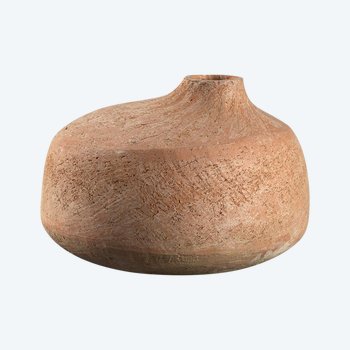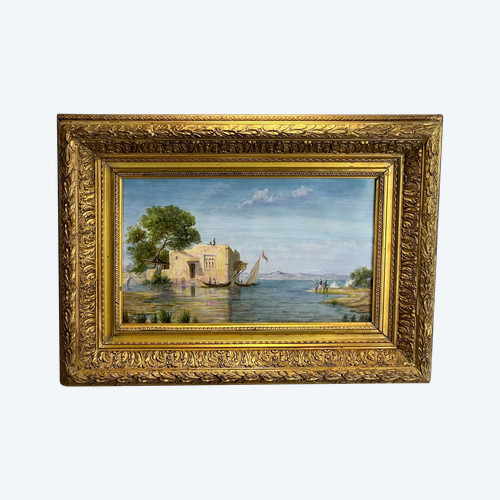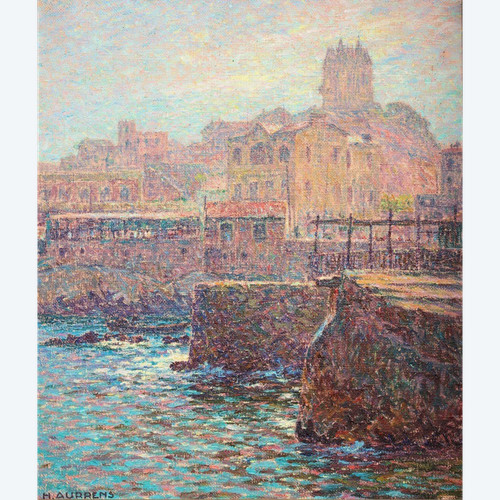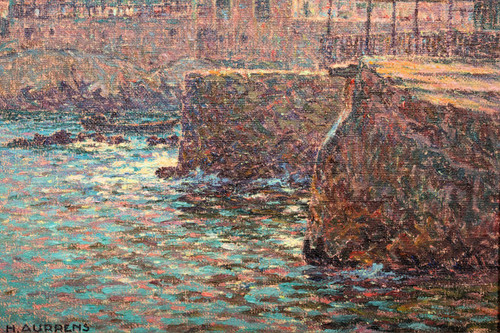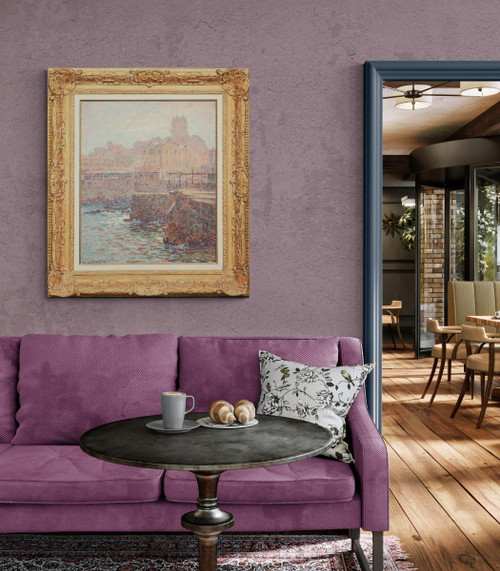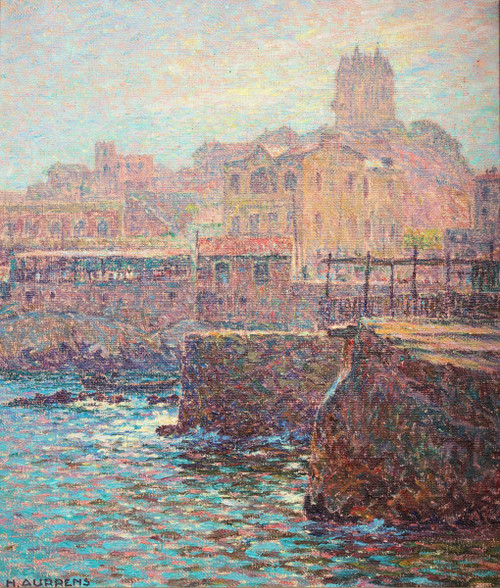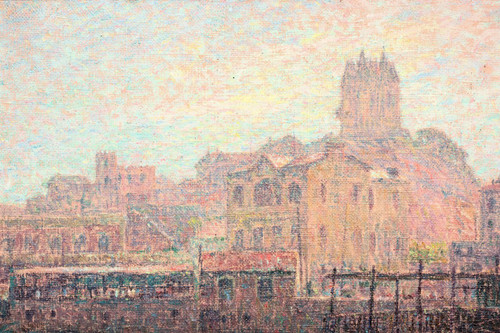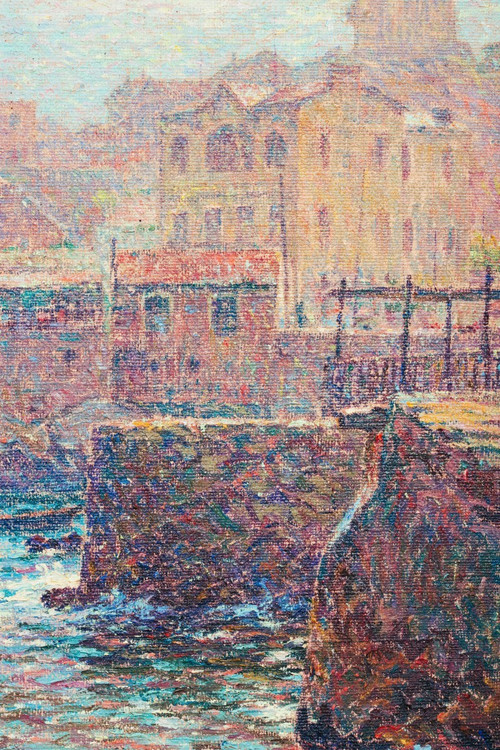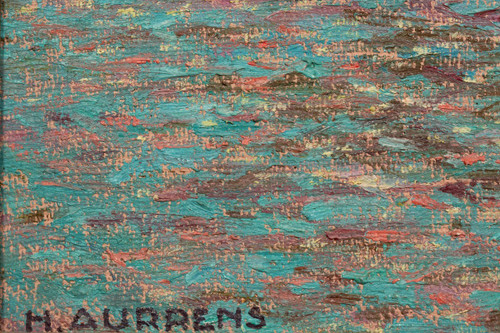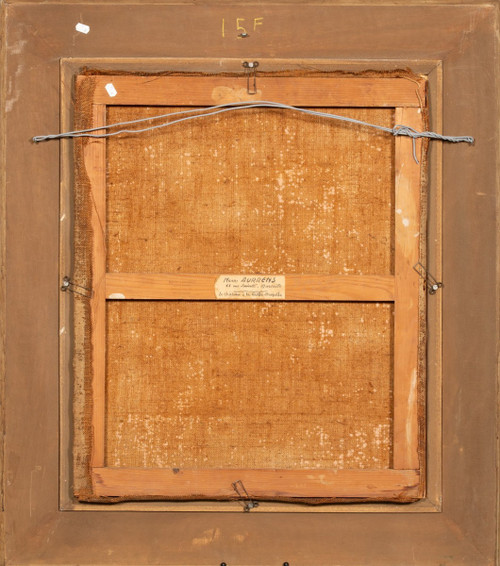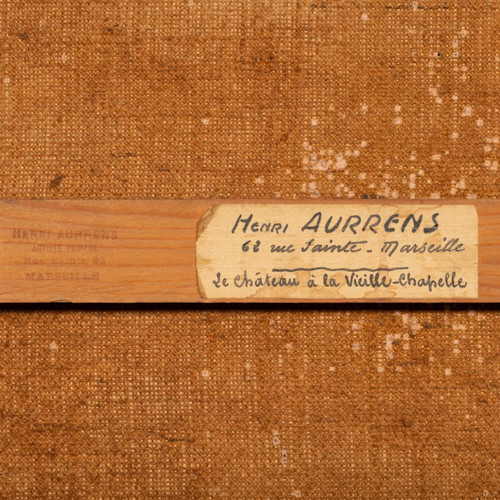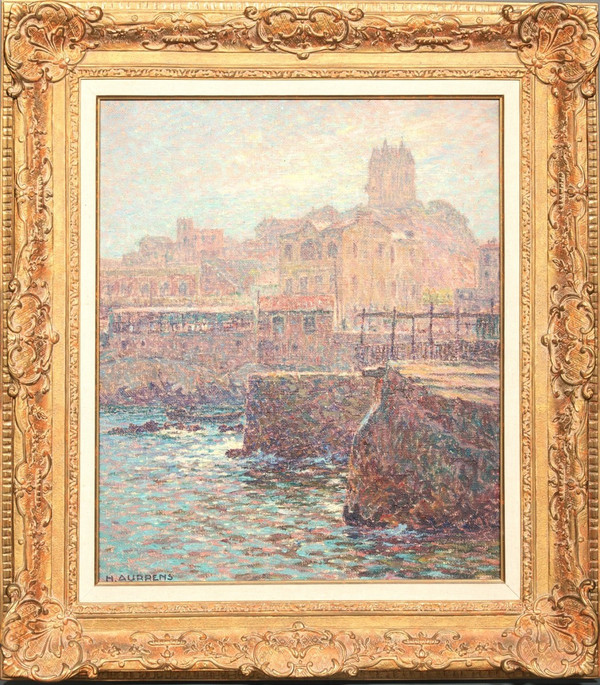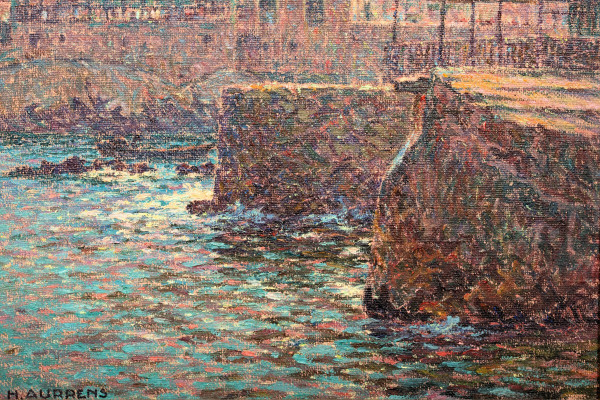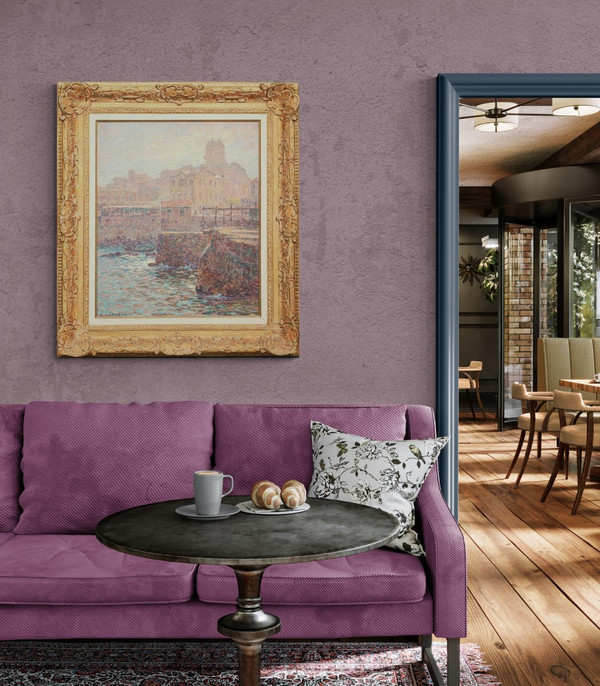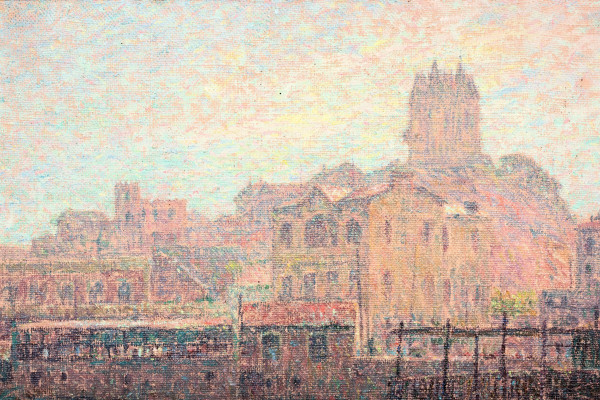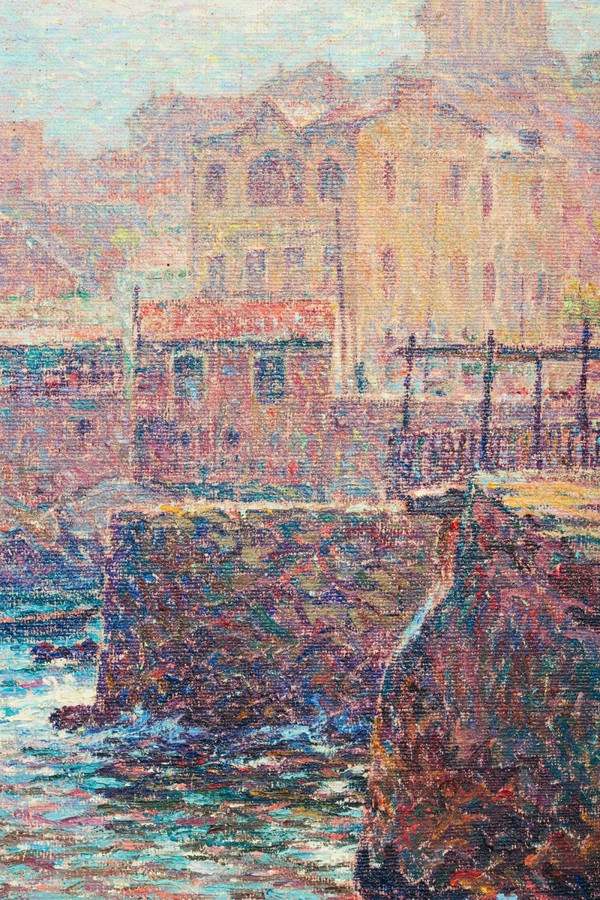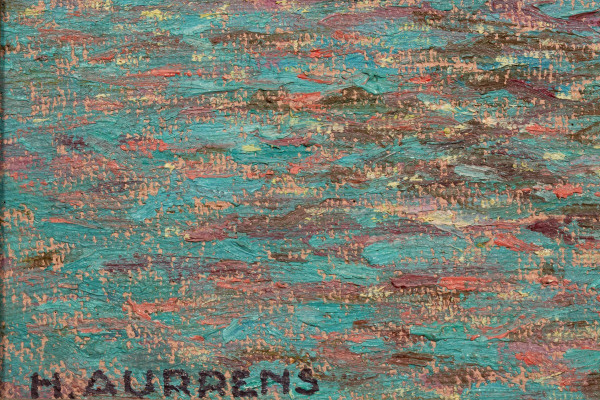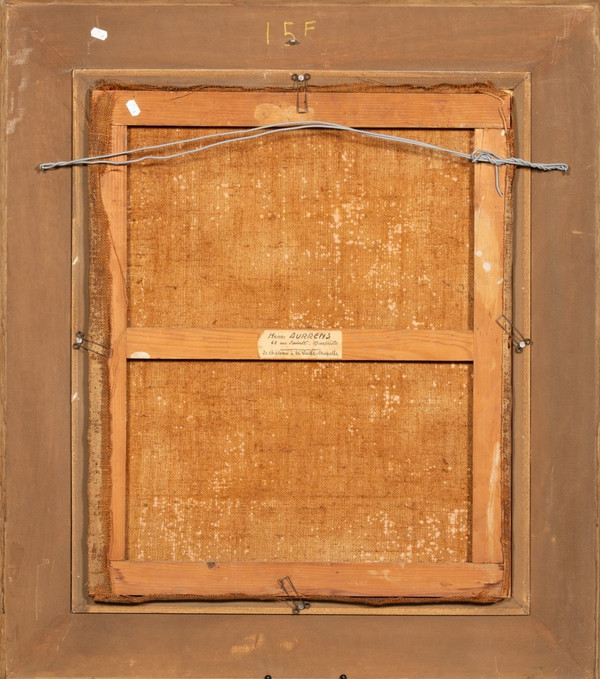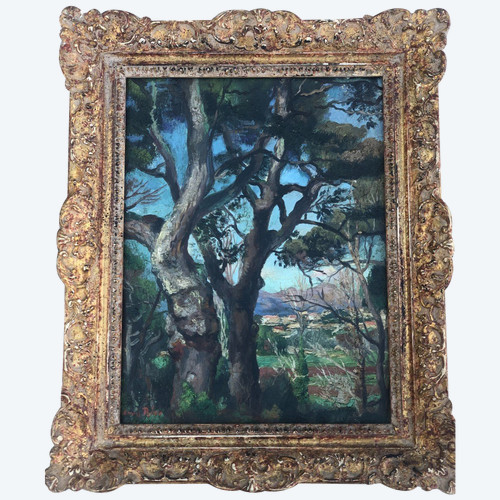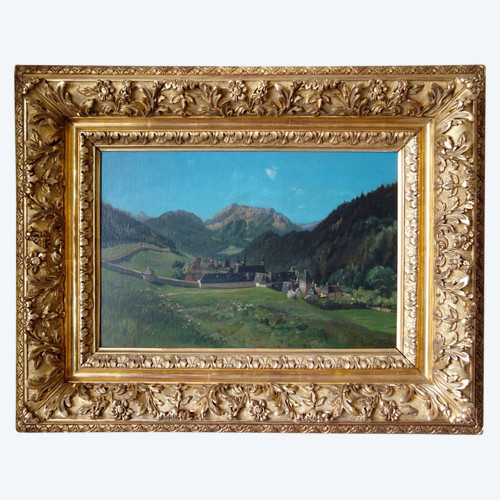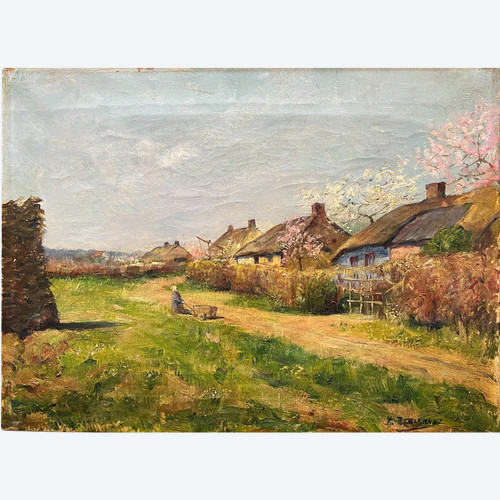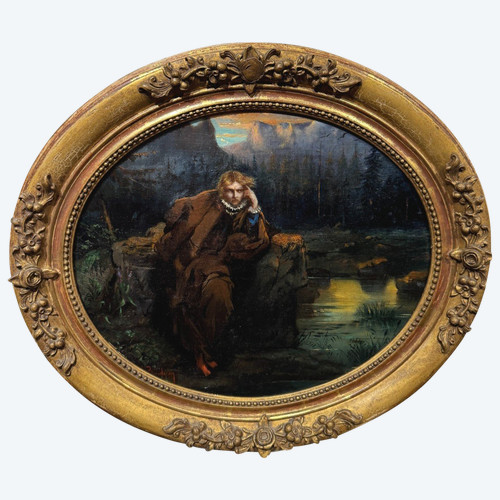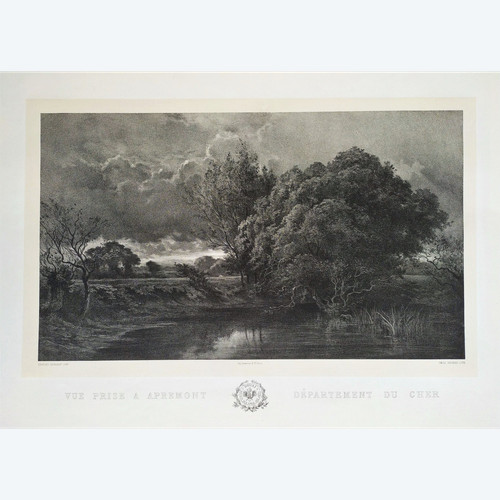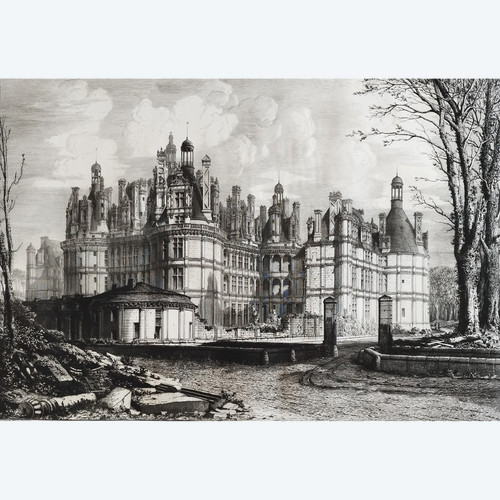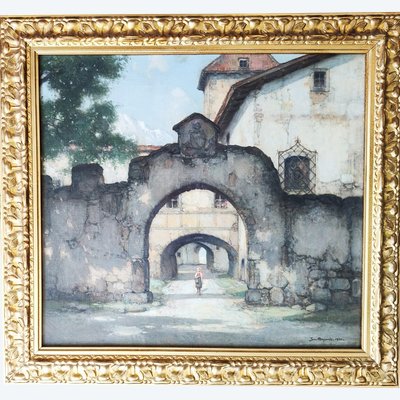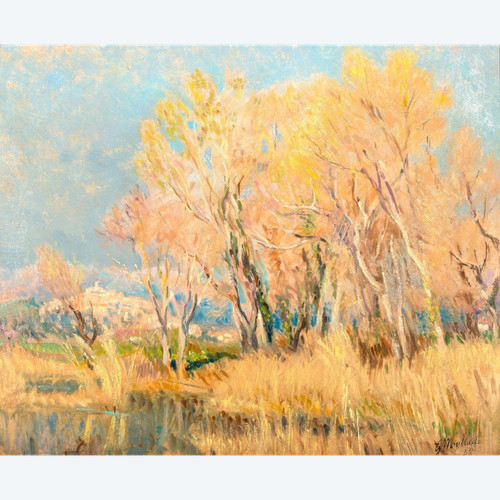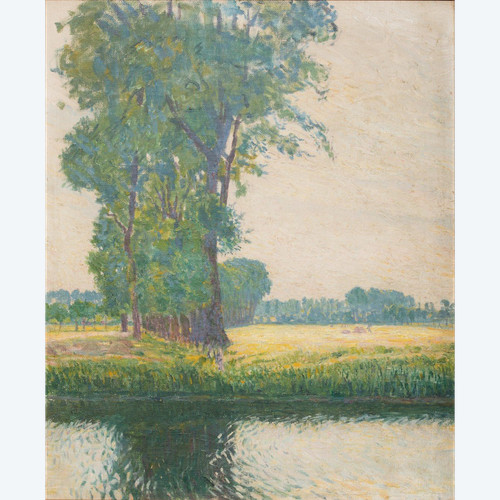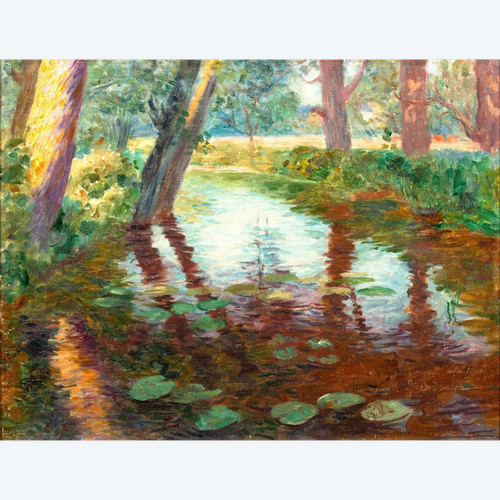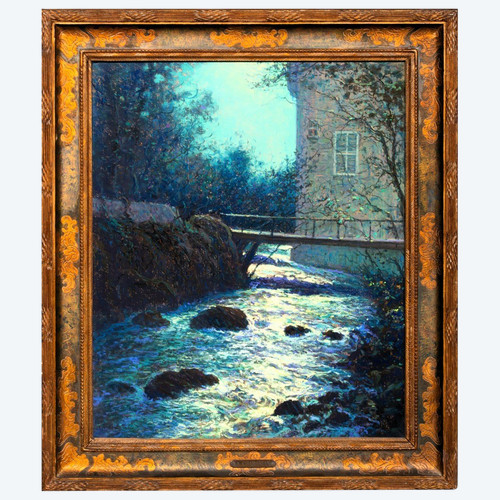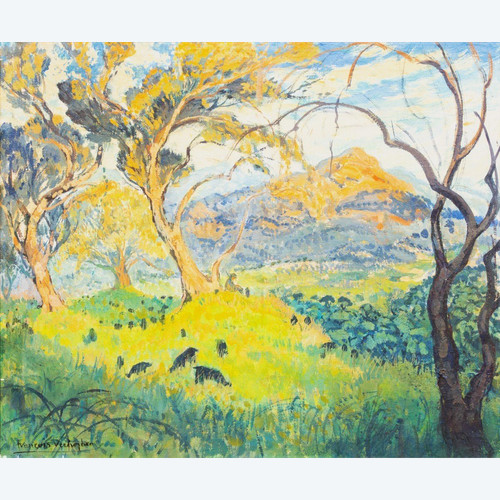This description has been translated and may not be completely accurate. Click here to see the original
Le Château à la Vieille Chapelle" by Henri Aurrens is a fine example of Post-Impressionist art, demonstrating his mastery of pointillism and his ability to create serene, luminous landscapes that evoke the timeless beauty of the French coast.
The painting depicts a coastal scene, probably located in Marseille, as the title suggests. The view includes a prominent old chapel or château, whose structure blends perfectly with the surrounding town. The foreground features the rocky shoreline and sparkling water, painted with meticulous attention to the play of light on the surface. The background is dominated by the town's architectural elements, with the buildings arranged in a linear fashion, leading the viewer's eye to the central structure. The background fades into a soft, atmospheric mist, emphasizing distance and adding depth to the scene.
Aurrens uses a soft, pastel color palette, with predominant hues of blue, pink, violet and ochre. This choice of colors creates a harmonious, tranquil atmosphere, typical of the Post-Impressionist style. The play of light and shadow is subtle but effective, with the reflections of light on the water indicating the time of day, perhaps early morning or late afternoon. The buildings are bathed in soft, diffused light, reinforcing the scene's impression of calm and tranquillity. Aurrens uses the technique of pointillism, characterized by small, distinct dots of color applied in small strokes. This method lends brightness to the painting and allows the colors to blend visually when viewed from a distance, creating a luminous effect.
Brushwork is delicate and controlled, with each dot carefully placed to build up the shapes and textures of the scene. This approach creates a textured surface that catches the light in different ways, depending on the viewer's perspective. The overall atmosphere of the painting is calm and serene. The soft color palette and delicate blending of colors evoke a sense of calm, giving the viewer the impression of being at peace with the coastal landscape. The depiction of the old chapel and the surrounding town offers a sense of timelessness, as if capturing a moment that has remained unchanged for centuries. The painting also reflects Aurrens' attachment to Marseille and the Provence region, capturing the unique light and atmosphere of the Mediterranean coast.
Henri Aurrens (1873-1934)
Henri Aurrens, born Louis Henri Joseph Aurrens on October 27, 1873 in Marseille, was a leading French painter, illustrator and caricaturist. He spent his formative years in Marseille, where he developed an early fascination for the arts. Early in his career, Aurrens moved to Paris, the epicenter of the art world, to pursue his artistic activities. There, he illustrated postcards and created caricatures for various magazines, earning a living while honing his skills. He then returned to his native Marseille, where he adopted the pointillist style, a technique characterized by small, distinct dots of color to form an image.
Henri Aurrens is best known for his landscape paintings, which often depict the vibrant, atmospheric scenes of Provence. His "À Montredon" is in the Musée Gassendi in Digne-les-Bains, and "Matin de printemps" is in the Musée Cantini in Marseille. These works testify to his ability to capture the light and colors of the landscapes of southern France. Aurrens' work was well received during his lifetime, and he participated in numerous exhibitions. His contributions to art were recognized in various public collections and exhibitions, making him a respected figure in the post-impressionist movement. Despite his success, much of his work remains undiscovered today, with some pieces held in public collections and others in private hands. Henri Aurrens lived a life devoted to art until his death on May 6, 1934, in Marseille. His legacy lives on in his paintings, which capture the essence of the French landscape and the evolution of post-impressionist techniques.
Ref: UTK3UK9DIK
 Large Terracotta Vase, France, 1960s
490 € EUR
Large Terracotta Vase, France, 1960s
490 € EUR


